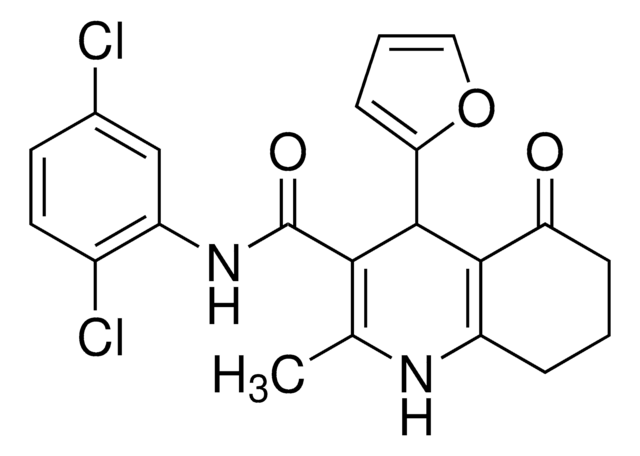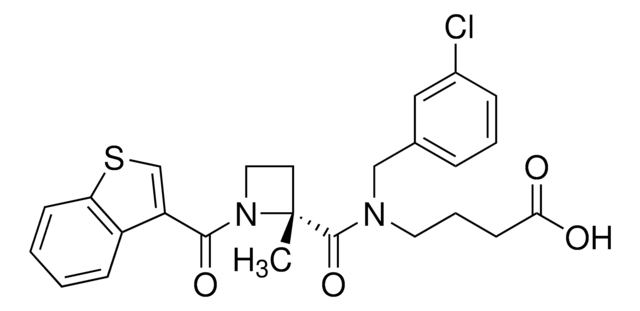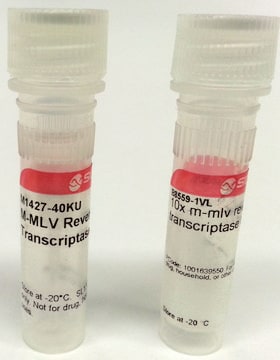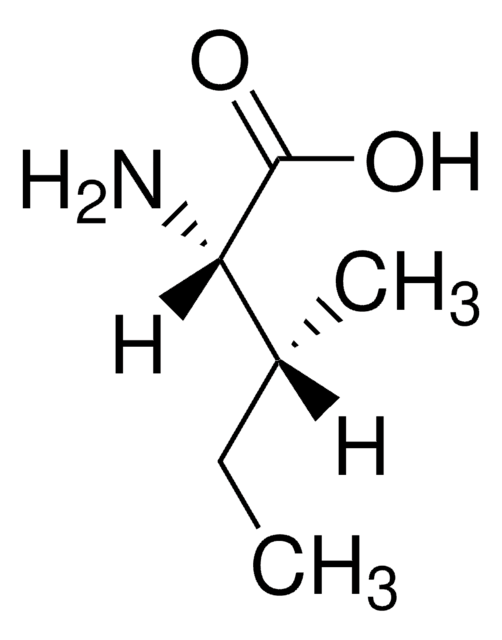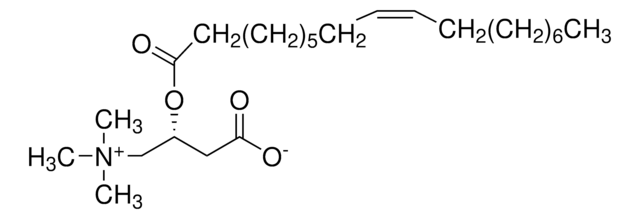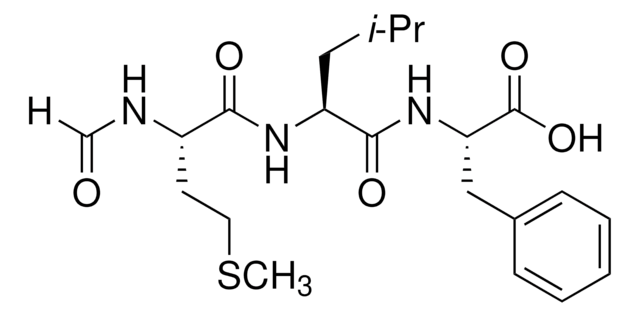Key Documents
SML0302
4-CMTB
≥98% (HPLC)
Synonim(y):
4-Chloro-α-(1-methylethyl)-N-2-thiazolyl-benzeneacetamide
About This Item
Polecane produkty
Próba
≥98% (HPLC)
Postać
powder
warunki przechowywania
desiccated
kolor
white to beige
rozpuszczalność
DMSO: ≥10 mg/mL
temp. przechowywania
2-8°C
ciąg SMILES
CC(C)C(C(=O)Nc1nccs1)c2ccc(Cl)cc2
InChI
1S/C14H15ClN2OS/c1-9(2)12(10-3-5-11(15)6-4-10)13(18)17-14-16-7-8-19-14/h3-9,12H,1-2H3,(H,16,17,18)
Klucz InChI
AZYDQCGCBQYFSE-UHFFFAOYSA-N
Zastosowanie
Działania biochem./fizjol.
Hasło ostrzegawcze
Warning
Zwroty wskazujące rodzaj zagrożenia
Zwroty wskazujące środki ostrożności
Klasyfikacja zagrożeń
Acute Tox. 4 Oral - Eye Irrit. 2
Kod klasy składowania
11 - Combustible Solids
Klasa zagrożenia wodnego (WGK)
WGK 3
Temperatura zapłonu (°F)
Not applicable
Temperatura zapłonu (°C)
Not applicable
Certyfikaty analizy (CoA)
Poszukaj Certyfikaty analizy (CoA), wpisując numer partii/serii produktów. Numery serii i partii można znaleźć na etykiecie produktu po słowach „seria” lub „partia”.
Masz już ten produkt?
Dokumenty związane z niedawno zakupionymi produktami zostały zamieszczone w Bibliotece dokumentów.
Klienci oglądali również te produkty
Nasz zespół naukowców ma doświadczenie we wszystkich obszarach badań, w tym w naukach przyrodniczych, materiałoznawstwie, syntezie chemicznej, chromatografii, analityce i wielu innych dziedzinach.
Skontaktuj się z zespołem ds. pomocy technicznej